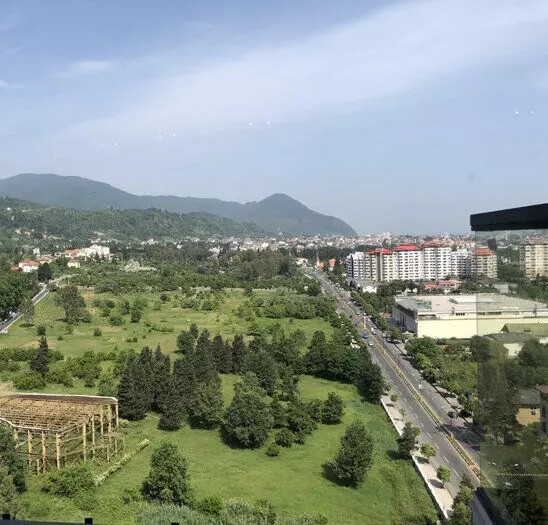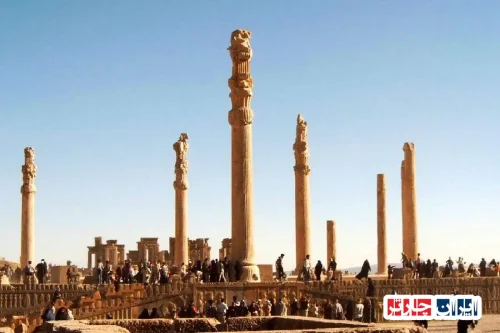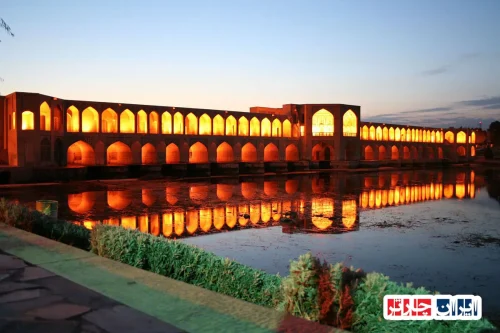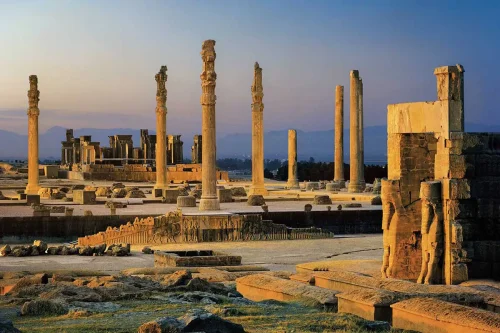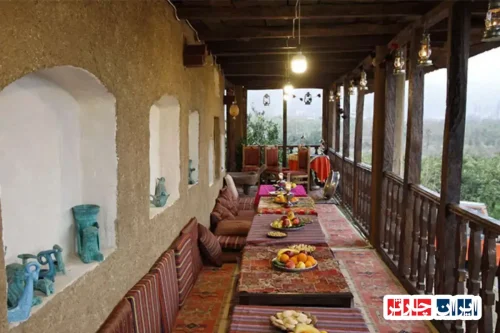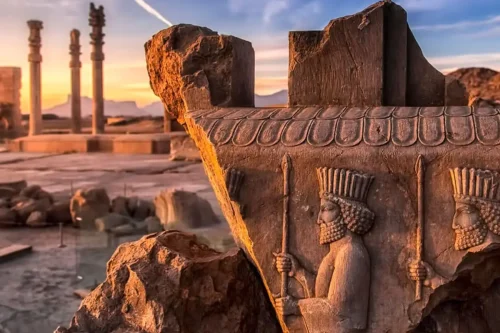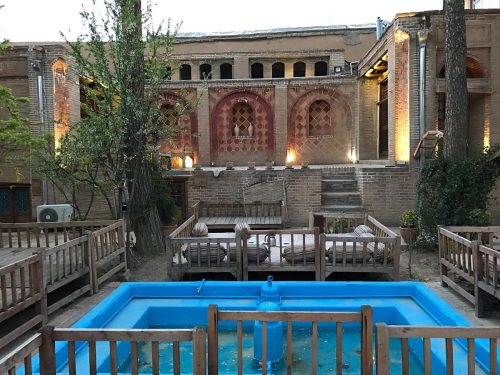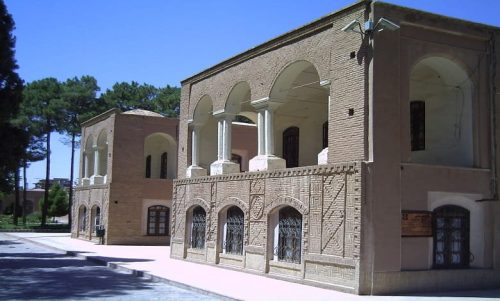News Source : https://www.irna.ir/news/85655130/%D9%81%D8%B1%D8%AC%D8%A7%D9%85-%D9%88%D8%B9%D8%AF%D9%87-%D9%88%D8%B2%DB%8C%D8%B1-%D9%85%DB%8C%D8%B1%D8%A7%D8%AB-%D9%81%D8%B1%D9%87%D9%86%DA%AF%DB%8C-%D8%A8%D8%B1%D8%A7%DB%8C-%D8%A7%D8%AD%DB%8C%D8%A7%DB%8C-%D8%A8%D8%A7%D8%BA-%DB%B3%DB%B3-%D9%87%DA%A9%D8%AA%D8%A7%D8%B1%DB%8C-%D8%B1%D8%A7%D9%85%D8%B3%D8%B1
Outcome of the Cultural Heritage Minister’s Promise in Reviving the 33-hectare Ramsar Garden
After two decades of disputes and unfulfilled promises, the revival of Ramsar’s 33-hectare garden, an important part of the World Heritage Site application for this region, has moved forward with the direct intervention of the 14th government’s Minister of Cultural Heritage, Tourism, and Handicrafts. The general outline of the garden revival plan has now been approved, and the Cultural Heritage Organization awaits detailed execution maps from the Ramsar municipality for final review and approval by the technical committee.
In the past two decades, Ramsar’s garden has been excluded from the UNESCO World Heritage list due to haphazard interventions and damages inflicted on its natural and historic boundaries. These interventions include multiple attempts to create large parks and cultural-commercial complexes without adherence to protective laws.
With the new government in place and the presence of Minister Seyed Reza Salehi Amiri of Cultural Heritage, attention has been drawn back to Ramsar’s garden revival case. The minister has stated in specialized meetings that the project is currently at a stage requiring precise execution maps to be presented to the Cultural Heritage Organization. These detailed maps must include specifics such as materials, dimensions, and configurations crucial for preserving the garden’s historic and natural values.
Recent efforts have included dividing the garden into three main regions: western, central, and eastern, each with its own protective regulations. In the western region, maintaining the integrity of the Hyrcanian forest trees is crucial, allowing no interventions. The central area requires restoration and revival based on current conditions, supported by aerial documentation. The eastern region is designed to foster pedestrian pathways, cycling routes, and artisanal marketplaces with minimal impact.
Reviving Ramsar Garden and its Importance for World Heritage Registration
These actions reflect the Ministry of Cultural Heritage’s commitment to preserving and reviving Ramsar’s historical fabric, increasing hopes for its future recognition as a World Heritage site.
Alireza Izadi, Director of Registration, Site Protection, and Revival at the Ministry of Cultural Heritage, emphasized that all plans must align with the region’s native status, and environmental destruction or tree logging is prohibited. He also noted that creating tourism spaces suitable to the region’s climate could attract tourists and provide long-term economic benefits for Mazandaran.
With these hopes, the Ramsar garden revival project awaits the finalization of execution map details and final approval by the technical committee of the Ministry of Cultural Heritage to proceed quickly and in compliance with all regulations, positioning Ramsar as a prominent tourism and heritage destination.
First Steps of the Cultural Heritage Minister in Revitalizing Ramser’s 33-Hectare Garden
The outcome of the Cultural Heritage Minister’s promise to revitalize the 33-hectare garden in Ramser indicates the serious commitment of the 14th government to preserving and reviving the natural and cultural heritage of Mazandaran Province. After two decades of delays and unfulfilled promises, the direct involvement of the Cultural Heritage Minister in this project is considered a turning point in the revitalization process.
Approval of the General Plan for Revitalizing Ramser’s 33-Hectare Garden
The general plan for revitalizing Ramser’s 33-hectare garden has been approved by the Ministry of Cultural Heritage. This plan involves dividing the garden into three main areas: western, central, and eastern, each with its own specific protective regulations. Approval of these general plans is an important step towards achieving the garden’s revitalization goals and ensuring the preservation of its historical and natural values.
Area Division of Ramser Garden: Western, Central, and Eastern
Ramser Garden has been divided into three main areas: the western region, which includes the Hyrcanian forest where no interventions are allowed, the central region, which requires restoration and rehabilitation based on 1355 aerial observations, and the eastern area, designed to create pedestrian, cycling paths, and craft markets.
Expectations of the Cultural Heritage Ministry’s Technical Committee
The Cultural Heritage Organization is awaiting the receipt of execution plans and project details from Ramser Municipality. These plans should include all essential details, including materials, dimensions, and configurations necessary to preserve the historical and natural fabric of the garden. Upon receipt of the plans, the Cultural Heritage Ministry’s Technical Committee will start the final review and approval process.
Preservation of Trees in the Hyrcanian Forest in Ramser Garden’s Western Region
In the western region of Ramser Garden, maintaining the integrity of the territory and trees of the Hyrcanian forest is considered a significant part of natural heritage. No interventions are permitted in this area, and it is emphasized that this section remains untouched to preserve its natural values.
Restoration of Ramser Garden’s Central Area Based on Aerial Documentation
Ramser Garden’s central area requires restoration and rehabilitation based on aerial documentation and photos from 1355. This action is aimed at returning the garden to its historical and natural state, and all activities must be carried out in accordance with the current status and protective regulations.
Design of Walkways and Craft Markets in the Eastern Area
The eastern region of Ramser Garden is designed to create walkways, cycling paths, and craft markets. This design aims to attract tourists and create an open and entertaining space for visitors. Furthermore, the creation of toilets with minimal load is also planned in this section.
The Cultural Heritage Ministry’s Commitment to the Global Registration of Ramser’s Historical Natural Landscape
Recent actions by the Cultural Heritage Ministry reflect its commitment to comprehensive registration of Ramser’s natural and historical heritage as a global destination. With the revitalization of Ramser’s 33-hectare garden, there is hope for this area to be registered as a World Heritage site, which could play an important role in attracting international tourists.
Managerial and Supervisory Roles in Executing Ramser Garden Revitalization Plan
The execution of the Ramser Garden revitalization plan requires the presence of managers and technical supervisors. Ali Reza Izadi, the Director General of Registration, Monument Perimeters, and Revitalization of the Ministry of Cultural Heritage, has emphasized the importance of accompanying execution plans with technical supervision. This ensures that all stages of the plan’s implementation are carried out with protective regulations and quality.
FAQ
- What is the outcome of the Cultural Heritage Minister’s efforts to revitalize Ramser Garden?
- The Cultural Heritage Minister has promised to issue protective regulations to Ramser Municipality for the 33-hectare garden’s revitalization and, upon receiving detailed plans, will approve and execute the project.
- Why was Ramser’s 33-hectare garden removed from the UNESCO World Heritage List?
- Ramser Garden was unable to be registered on the UNESCO World Heritage List due to multiple interventions and damages over two decades, including the illegal construction of cultural and commercial complexes.
- What impacts have previous interventions had on Ramser Garden?
- Interventions including the establishment of the Middle East Park, cultural and commercial complexes, and the segmentation of the garden have caused serious damage to its natural and historical fabric, preventing its integrity.
- What are the current steps for reviving Ramser Garden?
- The rehabilitation plan is approved and awaits execution plans from Ramser Municipality. The plan’s implementation will commence following a technical review by the Cultural Heritage Ministry.
- How is Ramser Garden divided, and how will each section be restored?
- Ramser Garden is divided into three sections: western, central, and eastern. The western section preserves the Hyrcanian forest, the central section will be restored using 1335 aerial photographs, and the eastern section will feature pathways, cycling routes, craft markets, and minimal interventions for toilets.
- What measures are in place to prevent tree cutting in Ramser Garden?
- All plans must comply with local and climatic conditions, and tree cutting is prohibited. Walkways are designed with curves to keep trees intact.
- What role do execution plans play in the revitalization of Ramser Garden?
- Execution plans specify the precise details of the revitalization, including locations, materials, dimensions, and the appearance of structures. Without these plans, the project cannot be approved by the technical committee.
- What issue does the serenity pool in Ramser Garden have?
- The serenity pool was executed without the official approval of the Cultural Heritage Ministry’s technical committee, leading to disputes. Specialized studies are required to assess its legitimacy and necessity.
- What obstacles have prevented the global registration of Ramser Garden?
- The main obstacles include non-expert interventions, illegal constructions, and failure to maintain the garden’s natural and historical integrity, leading to UNESCO’s rejection of the global registration request.
- How many and when were specialized meetings held for Ramser Garden’s revitalization?
- After the issuance of regulations, three specialized meetings were held with the participation of the Director General of Registration and Ramser’s Cultural Heritage Perimeters Council to review and approve the project details.
- What plans exist for converting streets into walkways in Ramser Garden?
- The asphalt street between the central area and the eastern section of the garden will be closed and transformed into a paved walkway. Additionally, light structures for craft markets and toilets with minimal load will be designed.
- What are the plans for the eastern side of Ramser Garden?
- On the eastern side of the garden, a tourism area compatible with climate will be created, including pavilions and rest areas. These structures must be designed based on local conditions.
- How was the issuing of protective regulations for Ramser Garden conducted?
- The Cultural Heritage Minister has issued protective regulations related to Ramser Garden to the Governor of Mazandaran, including dividing the garden into three zones and specifying protective actions for each area.
- Why is Ramser’s 33-hectare garden not considered a major economic factor?
- Ramser Garden is a tourist destination with limited capacity and is not expected to generate high revenues. The garden should provide long-term economic benefits but is not considered a major economic factor.
- Why are specialized studies necessary in the revitalization of Ramser Garden?
- Specialized studies are essential to ensure the plan aligns with local and climatic realities, eliminating unnecessary interventions and preserving the optimal natural space.
- How can we ensure that the revitalization plan for Ramser Garden matches the 1335 maps?
- By using 1335 aerial photographs and existing documents, the central core of the garden is restored, and access routes and geometric shapes are designed to match the original documents, preserving the historical integrity.

